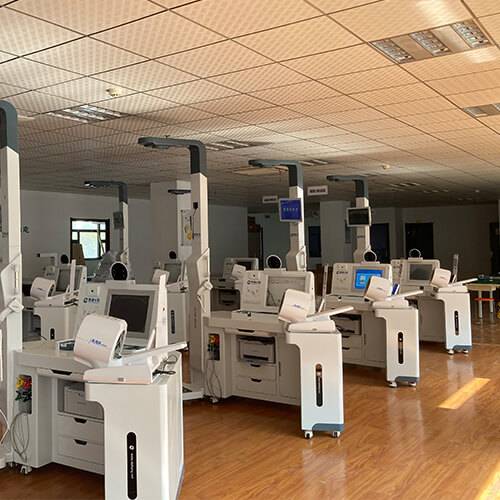Revolutionizing Healthcare: The Hospital Diagnostic Kiosk for Outpatient Services
In recent years, healthcare facilities worldwide have been seeking innovative solutions to improve patient experience and streamline operations. One such groundbreaking innovation is the hospital diagnostic kiosk for outpatient services. These kiosks are transforming the traditional outpatient process by offering a quick, efficient, and contactless way for patients to access essential diagnostic services. The integration of these kiosks into healthcare settings not only enhances patient convenience but also optimizes the workflow for medical staff, ultimately leading to better healthcare delivery.
The hospital diagnostic kiosk for outpatient services is designed to simplify the patient check-in and diagnostic process. Patients can easily access their health information, perform preliminary assessments, and even conduct basic diagnostic tests independently. This minimizes waiting times and reduces the burden on hospital staff, allowing them to focus on more complex medical tasks. Additionally, these kiosks are equipped with user-friendly interfaces and advanced diagnostic tools, ensuring accuracy and reliability. As a result, hospitals adopting these kiosks are seeing increased efficiency and patient satisfaction, making them an essential component of modern outpatient care.
Furthermore, the integration of all-in-one telemedicine solution for clinics with hospital diagnostic kiosks has opened new avenues for remote healthcare delivery. These comprehensive systems enable healthcare providers to connect with patients virtually, review diagnostic data instantly, and offer consultations without requiring physical visits. The combination of telemedicine with diagnostic kiosks creates a seamless healthcare experience, especially important in rural or underserved areas where access to specialized medical services may be limited. This synergy ensures that patients receive timely diagnoses and follow-up care, bridging the gap between in-person visits and remote consultations.
The hospital diagnostic kiosk for outpatient services also plays a crucial role in enhancing infection control and safety protocols. In the wake of global health crises, contactless check-in and diagnostic procedures have gained prominence. These kiosks reduce human-to-human contact, thereby lowering the risk of cross-infection. They are particularly valuable in high-traffic hospital settings, where they facilitate social distancing and minimize crowding. The ability to perform diagnostic assessments without direct contact makes these kiosks a vital asset in maintaining a safe healthcare environment.

Moreover, the versatility of hospital diagnostic kiosk for outpatient services extends to various diagnostic functions. Many kiosks are capable of conducting vital signs monitoring, blood pressure measurement, blood glucose testing, and even ECG recordings. This comprehensive approach allows for quicker diagnosis and immediate data collection, which can be shared with physicians in real-time. When integrated with all-in-one telemedicine solution for clinics, this setup ensures that patient data is seamlessly transmitted, enabling prompt medical intervention and personalized treatment plans.
In addition to improving diagnostic efficiency, these kiosks contribute to cost savings for healthcare facilities. Automating routine diagnostic procedures reduces the need for extensive staffing and manual paperwork, leading to decreased operational costs. Furthermore, patients benefit from shorter waiting times and reduced travel expenses, especially when combined with telemedicine consultations. As healthcare continues to evolve, the deployment of hospital diagnostic kiosk for outpatient services paired with all-in-one telemedicine solutions for clinics represents a forward-thinking approach that aligns with the demands of modern medicine.
In conclusion, the integration of hospital diagnostic kiosk for outpatient services and all-in-one telemedicine solution for clinics signifies a transformative shift in outpatient healthcare delivery. These technologies improve patient experience, enhance safety, and streamline diagnostic and consultation processes. As hospitals and clinics continue to adopt these innovations, they pave the way for a more efficient, accessible, and patient-centric healthcare system, ultimately leading to better health outcomes for all.
Comments
Post a Comment